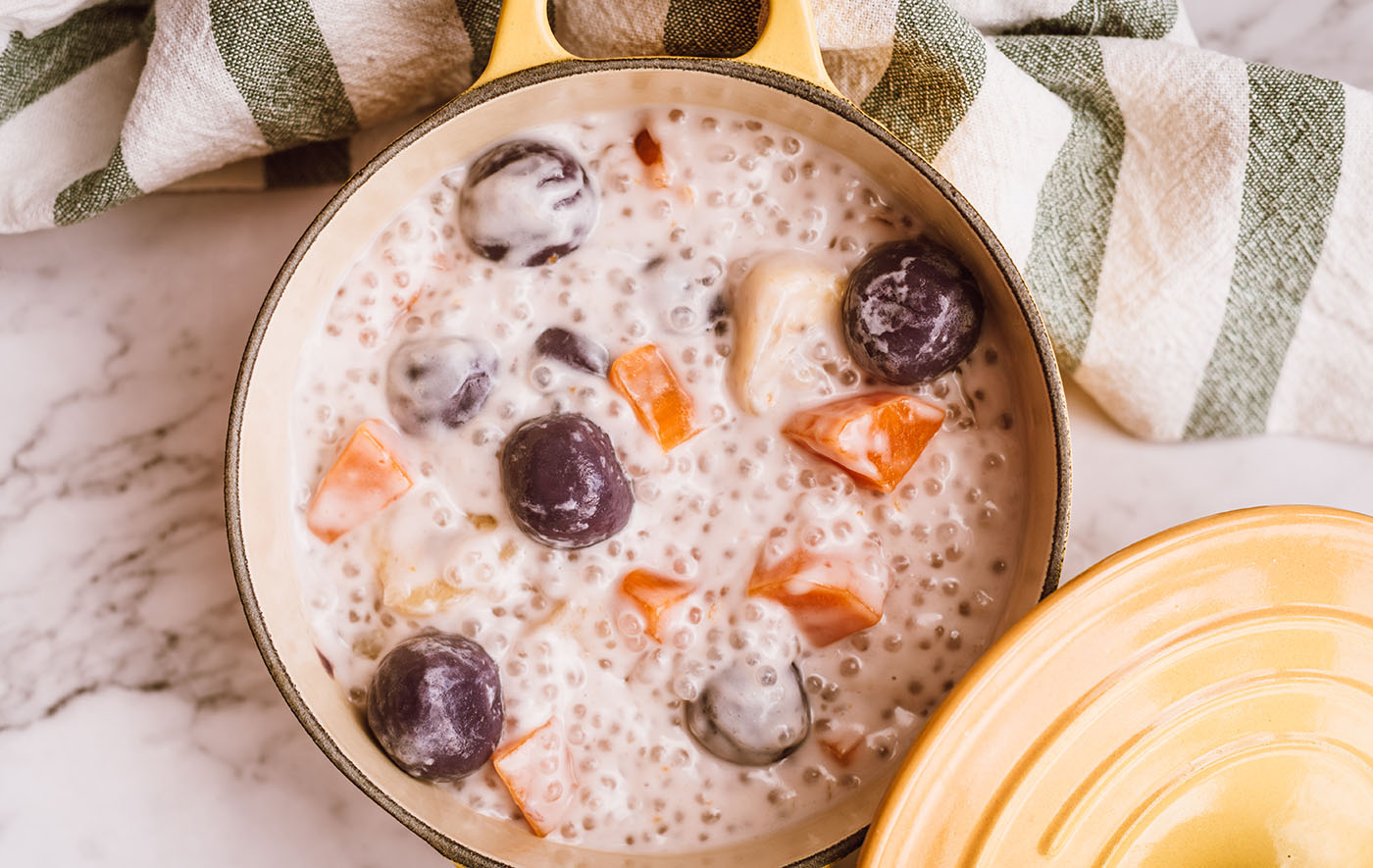Ginataang Halo-Halo is a popular merienda (afternoon snack) in the Philippines. But don’t be confused—it also goes by the name ginataang bilo-bilo (fun fact: the Filipino language loves repetition!).
This creamy coconut-based dessert comes in all sorts of colors and variations. You’ll find it sold by street vendors, served in carinderias, and enjoyed at home. In many small eateries, making a fresh batch of ginataang halo-halo is the next order of business after the lunch rush.
In Filipino, halo means “mix,” while ginataan refers to any dish made with gata (coconut milk). Bilo-bilo are the chewy rice flour balls that give this dessert its distinct texture. The usual ingredients include sliced saba (plantains), sago (tapioca pearls), langka (jackfruit), and kamote (sweet potatoes), all simmered in a rich, creamy coconut sauce. While these are the classic add-ins, some versions also include ube (purple yam) or gabi (taro) for extra flavor and texture.







